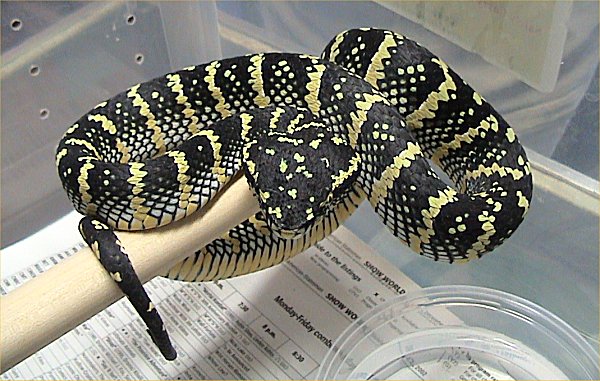Facts About Wagler's Palm Viper
Meet the Tropidolaemus wagleri, a mesmerizing venomous snake commonly known as Wagler's pit viper, temple viper, or temple pit viper. This captivating species belongs to the Crotalinae subfamily of the Viperidae family and is native to Southeast Asia. Notably, there are no recognized subspecies of this snake.
One prominent location to observe T. wagleri is the Temple of the Azure Cloud in Malaysia, where these snakes are frequently found.
These snakes exhibit distinct sexual dimorphism. Female Wagler's pit vipers can grow up to about 1 meter in length, including their tails, while males typically reach a maximum length of around 75 centimeters. They feature a distinctive triangular head and a slender, primarily arboreal body, which indicates they spend considerable time in trees. Their prehensile tails aid them in climbing adeptly. The snake displays a variety of colors and patterns, often referred to as "phases" which were once believed to represent different subspecies.
T. wagleri is also known by several other names, including bamboo snake, speckled pit viper, and temple snake. Their habitat ranges across Vietnam, Thailand, Malaysia, Singapore, and Indonesia. These snakes are nocturnal and prefer arboreal habitats, where they remain motionless for extended periods, waiting to ambush prey. They strike swiftly when prey comes within reach. Their diet primarily consists of rodents, birds, and lizards.
Reproductive behavior in T. wagleri involves ovoviviparity, meaning they give birth to live young. Females can produce between 15 and 41 offspring at a time. Their venom contains unique peptides known as Waglerins, which can induce fatal respiratory paralysis in mice. These peptides are being explored for their potential medical applications.
Taxonomically, T. wagleri has undergone reclassification over time. It was previously categorized under the genus Trimeresurus but was later reassigned, along with Hutton's viper, to a new genus due to its distinct morphology and venom characteristics.

 Malaysia
Malaysia